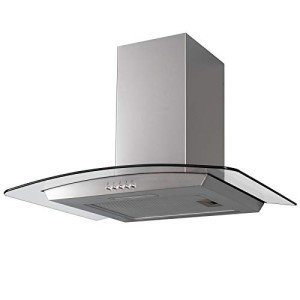
Chimney Cooker Hoods
Add a review FollowOverview
-
Sectors Environment
-
Posted Jobs 0
Company Description
See What Cooker Extraction Hoods Tricks The Celebs Are Using
The Importance of Cooker Extraction Hoods: A Comprehensive Guide
In modern kitchens, the main function of a cooker extraction hood can not be overstated. As cooking techniques advance and kitchen design evolves, these appliances have actually ended up being vital in keeping a tidy and safe cooking environment. Cooker extraction hoods, often called range hoods or kitchen hoods, serve multiple functions, from expelling smoke and smells to improving air quality. This blog site post intends to notify readers about different aspects of cooker extraction hoods, including their types, performances, advantages, and maintenance suggestions.
What is a Cooker Extraction Hood?
A cooker extraction hood is a mechanical device set up above cooktops or varieties designed to extract smoke, fumes, heat, and odor produced during cooking. These hoods can either be ducted, venting the air outside, or ductless, filtering and recirculating the air back into the kitchen.

Why Are Cooker Extraction Hoods Important?
- Air Quality: They help in preserving good air quality by eliminating cooking toxins.
- Odor Control: They get rid of undesirable smells that may remain after cooking.
- Wetness Reduction: They decrease humidity levels in the kitchen, avoiding mold development.
- Security: They reduce the threat of fire triggered by grease build-up.
- Convenience: They enhance the cooking experience by enabling users to operate in an enjoyable atmosphere.
Kinds Of Cooker Extraction Hoods
Selecting the ideal cooker extraction hood depends on a variety of elements, including kitchen size, cooking routines, and individual choices. Here are the primary types:
| Type | Description | Best for |
|---|---|---|
| Wall-Mounted | Installed versus a kitchen wall, often above the range. | Basic kitchens |
| Under-Cabinet | Mounted beneath kitchen cabinets, saving space. | Smaller sized kitchens |
| Island Hoods | Installed above kitchen islands and generally suspended. | Open-concept kitchens |
| Downdraft Hoods | Retractable hoods that appear from the counter when needed. | Trendy kitchens |
| Professional Hoods | Durable hoods developed for extensive cooking. | Gourmet kitchens |
| Ductless or Recirculating | Filters air and recirculates it back into the kitchen. | Homes lacking ductwork |
Features to Consider
When choosing a cooker extraction hood, consider the following features:
-
CFM Rating: Higher Cubic Feet per Minute (CFM) ratings indicate more powerful air flow. A CFM of 300-600 is usually sufficient for many home kitchens, while professional designs may go beyond 900 CFM.
-
Noise Levels: Measured in sones, quieter hoods are around 1-3 sones. Think about the sound level based on your cooking practices.
-
Fan Speed: Multiple speed settings enable users greater versatility based upon cooking requirements.
-
Lighting: Integrated lighting can boost the cooking experience while offering visibility over your cooktop.
-
Filters: Aluminum mesh or baffle filters are efficient for grease and smell removal. Some hoods also include charcoal filters for ductless options.
Benefits of Cooker Extraction Hoods
Here’s a list of advantages connected with having a cooker extraction hood:
- Enhanced air quality
- Decrease in cooking smells
- Reduced humidity levels
- Minimization of grease accumulation
- Enhanced safety
- Increase in kitchen visual appeals
- Added residential or commercial property value
Installation and Maintenance
Setup Process
The installation of Cooker Extraction Hoods – https://Www.wilbertraithel.top/technology/the-importance-of-kitchen-extractor-fans-a-comprehensive-guide/ – may need expert help, specifically for ducted models. Here are some general actions:
- Measure the Kitchen: Ensure the suitable size of the hood for your cooktop.
- Choose the Location: Ideally, the hood ought to be positioned 20-30 inches above the cooking surface.
- Ducting (if applicable): Plan the ducting path for ideal airflow outside the home.
- Protect the Hood: Follow the maker’s guidelines for safe mounting.
- Connect Power: Ensure electrical connections adhere to local codes.
Maintenance Tips
- Regular Cleaning: Clean filters monthly to avoid grease accumulation.
- Replace Filters: Change charcoal filters according to the producer’s recommendations.
- Examine Ducts: Ensure ducts are clear and devoid of blockages to preserve airflow.
- Check Lights: Replace bulbs as required to ensure appropriate lighting during cooking.
Often Asked Questions (FAQ)
1. How frequently should I clean my cooker extraction hood?
It is suggested to clean the filters of your cooker extraction hood a minimum of once a month.
2. Can I install a cooker extraction hood myself?
While it is possible to install it yourself, especially if it’s a ductless design, employing a professional is suggested for ducted hoods to make sure safety and compliance with regional building codes.
3. What is the perfect CFM ranking for a home kitchen?
A CFM between 300 and 600 is generally sufficient for a lot of home kitchens; however, you might need a greater rating for expert cooking styles.
4. Are ductless hoods as effective as ducted hoods?
Ducted hoods are usually more effective at getting rid of heat, smoke, and smells, as they vent air exterior. Ductless hoods can be effective however require regular filter modifications and may not eliminate heat as well.
5. The length of time will my cooker extraction hood last?
With appropriate upkeep, a quality cooker extraction hood can last 10-15 years.
In conclusion, cooker extraction hoods are a vital addition to any kitchen, providing advantages that enhance both the cooking experience and total air quality. With numerous types available, customized functions, and consistent maintenance, homeowners can select the ideal hood to meet their culinary requirements while promoting a healthier home environment.


